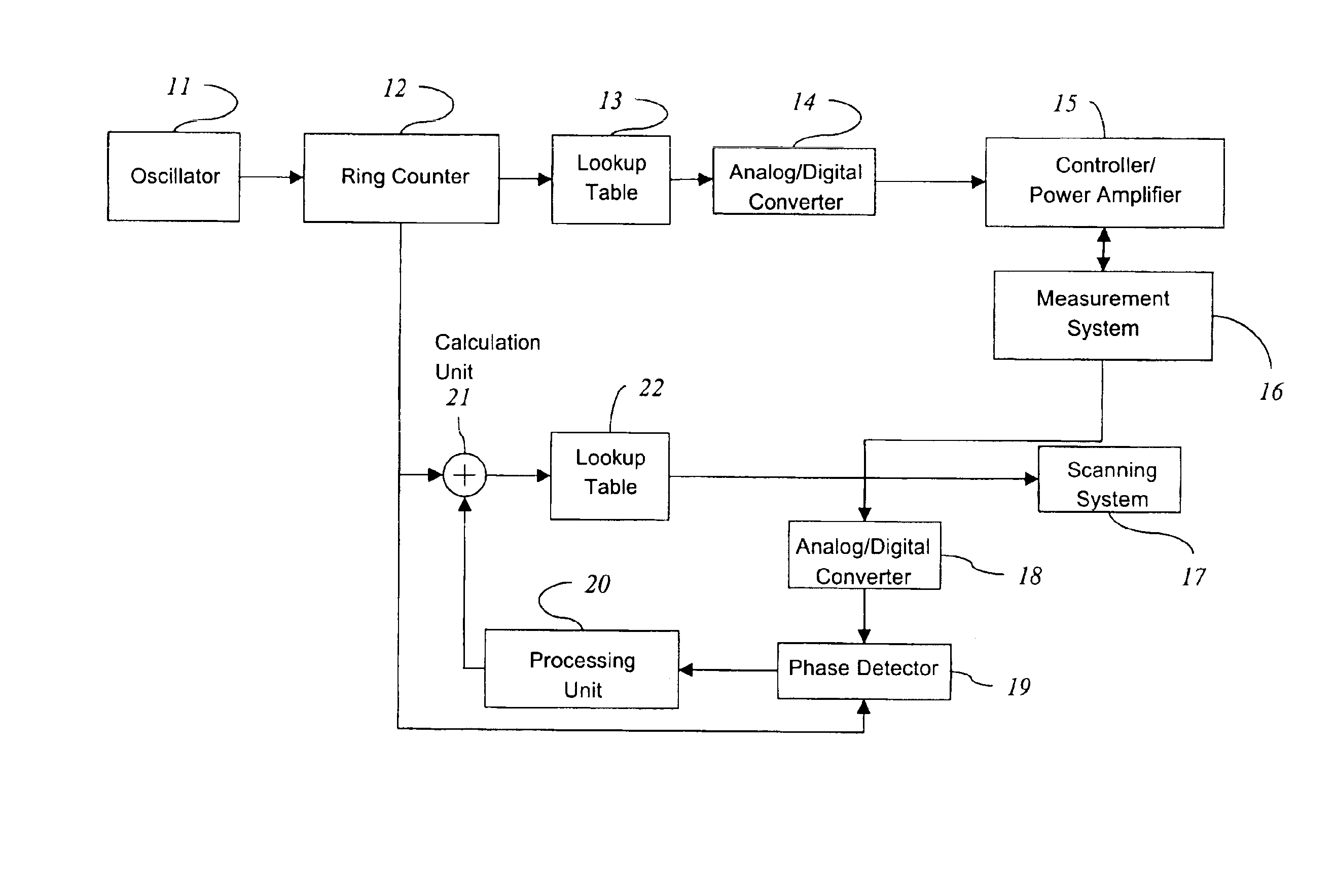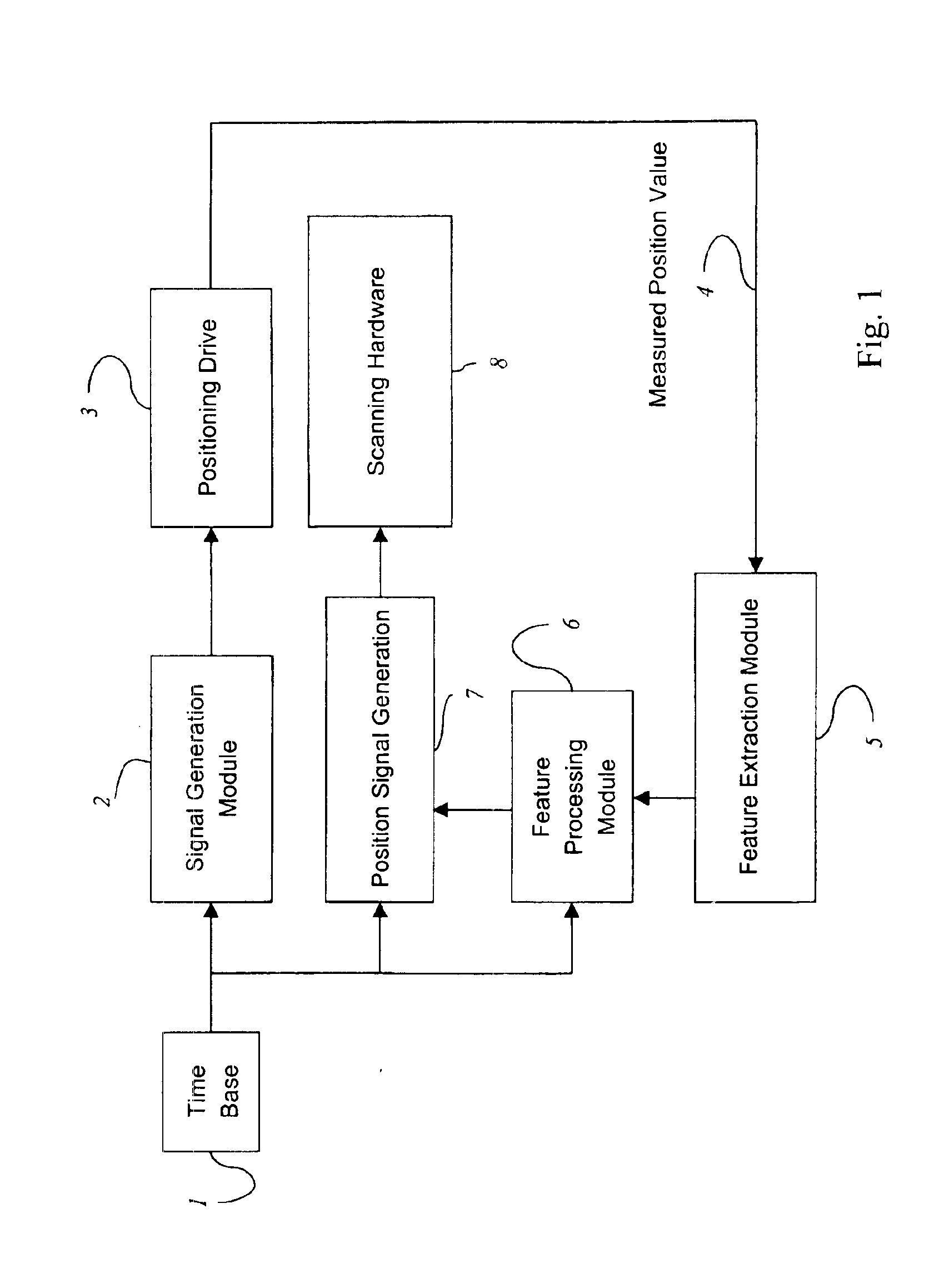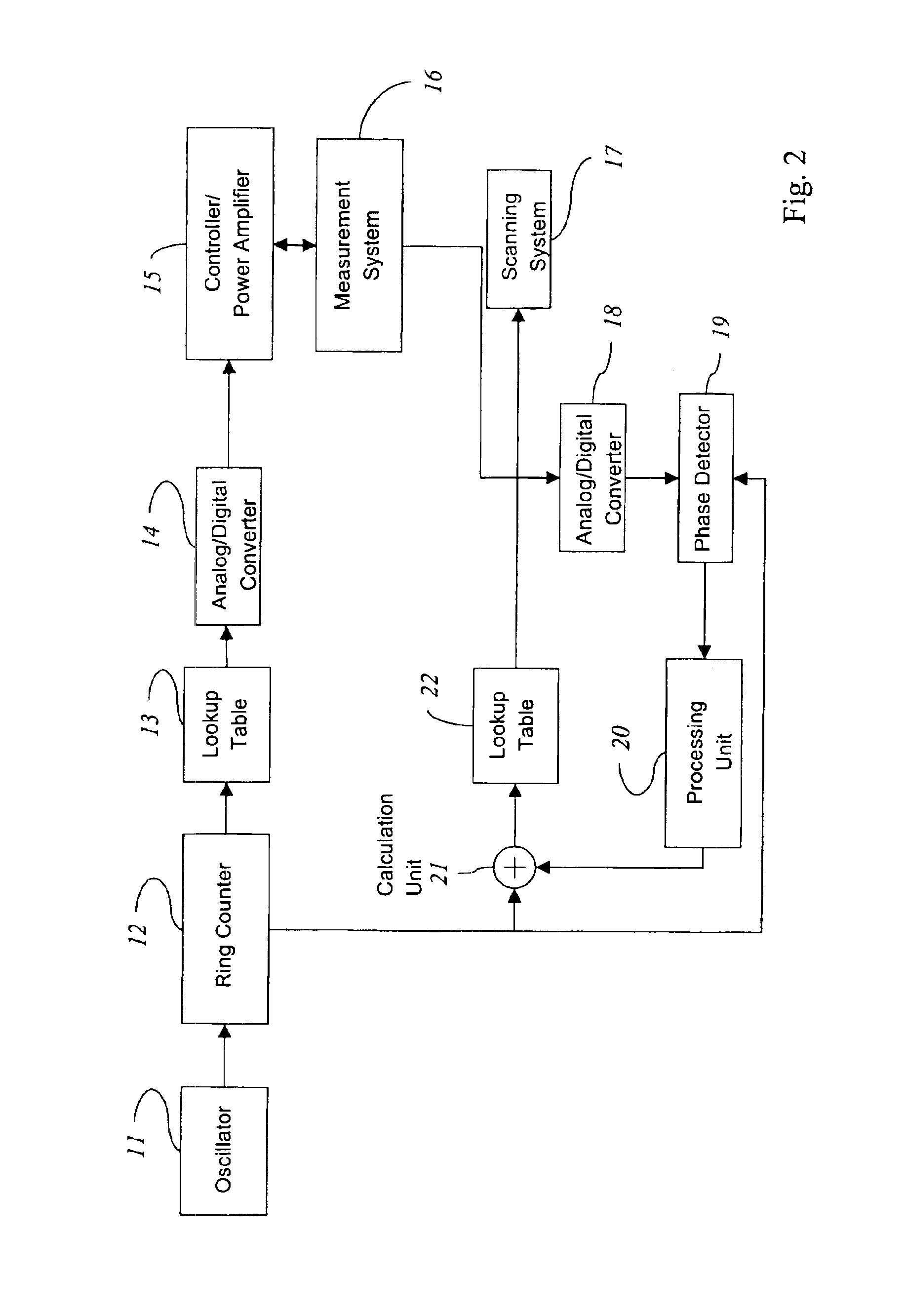Method for operating a positioning apparatus, and scanning microscope
a positioning apparatus and scanning microscope technology, applied in the direction of converting sensor output, instruments, electric discharge lamps, etc., can solve the problems of sequence then showing defects, overlieing the usable signal, position error, etc., and achieve the effect of higher accuracy
- Summary
- Abstract
- Description
- Claims
- Application Information
AI Technical Summary
Benefits of technology
Problems solved by technology
Method used
Image
Examples
Embodiment Construction
[0047]FIG. 1 shows a flow chart of the method. Time base 1 is configured as a ring counter. The period of one pass corresponds to the desired period of the galvanometer oscillation in the X direction. From this counter value, the position setpoint for a positioning drive 3 is generated in signal generation module 2. Positioning drive 3 contains a position measurement system. Measured position value 4 is conveyed to a feature extraction module 5, in which values characteristic of the position of the positioning drive are extracted. These values are conveyed to feature processing module 6 where, from these data and from the time values generated by time base 1, the correction values necessary for position signal generation 7 are generated. In the module for position signal generation 7, position values are generated from the time values deriving from time base 1 and from the correction values generated by feature processing module 6, and are fed into scanning hardware 8 for further pr...
PUM
 Login to View More
Login to View More Abstract
Description
Claims
Application Information
 Login to View More
Login to View More - R&D
- Intellectual Property
- Life Sciences
- Materials
- Tech Scout
- Unparalleled Data Quality
- Higher Quality Content
- 60% Fewer Hallucinations
Browse by: Latest US Patents, China's latest patents, Technical Efficacy Thesaurus, Application Domain, Technology Topic, Popular Technical Reports.
© 2025 PatSnap. All rights reserved.Legal|Privacy policy|Modern Slavery Act Transparency Statement|Sitemap|About US| Contact US: help@patsnap.com



